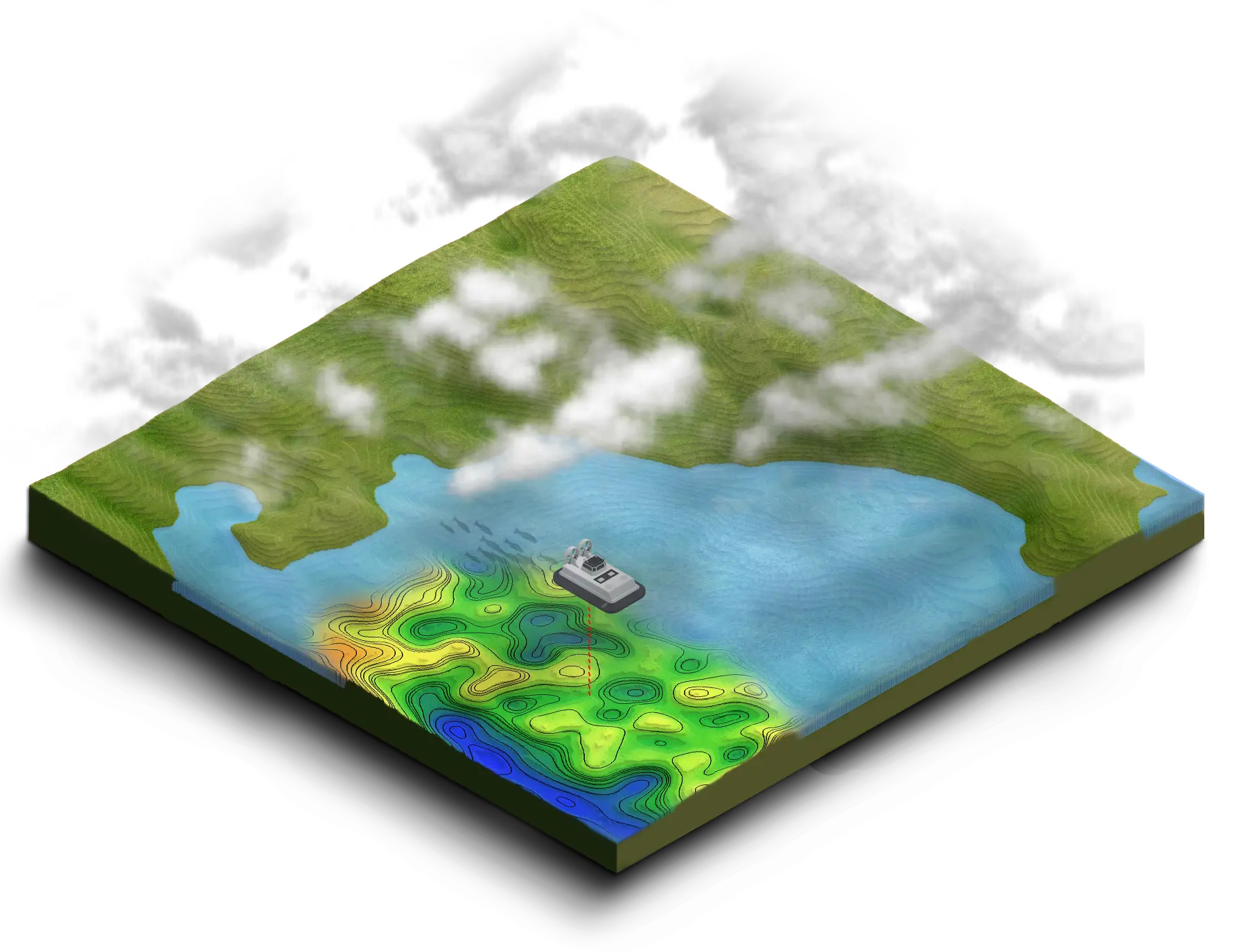La bathymétrie
Our bathymetric solutions for ponds, lagoons, and rivers do not just provide accurate depth surveys; they also pave the way for a multitude of essential calculations for the effective management of aquatic resources. With our advanced technologies, you can perform detailed analyses such as:
- Volume of water : Accurately determine the available water volume, crucial for water resource management and infrastructure planning.
- Thickness of sediments : Evaluate sediment accumulation to plan dredging operations and maintain navigability and water quality.
- Transverse and longitudinal profiles : Analyze the morphology of waterways and bodies of water to understand flow dynamics and prevent flooding risks.
- Change tracking : Compare the surveys over time to detect changes in the bottom, erosion, or sedimentation, and adjust your management strategies.
By integrating these calculations into your projects, you gain a comprehensive and accurate view of your aquatic environments, allowing you to make informed and sustainable decisions. Trust our expertise to transform your bathymetric data into operational insights, thereby optimizing the management of your water points.
The echo sounders that we are equipping on our drones
Echo sounders are essential instruments for measuring depth and analyzing the seabed. They operate by emitting acoustic waves and analyzing the echoes reflected by the bottom. There are mainly two types of echo sounders: single-frequency and dual-frequency, each having its advantages and disadvantages.
Single-frequency echo sounders :
These devices emit a single frequency, usually high (around 200 kHz).
- Precision in shallow waters : High frequencies provide better resolution, allowing for detailed reading of the terrain and effective discrimination of targets.
- Simplicity and cost : Less complex, these sondes are often more affordable and easier to use.
Dual-frequency echo sounders:
These devices can emit two distinct frequencies, typically a low (50 kHz) and a high (200 kHz).
-
Versatility : Low frequency is ideal for probing great depths, while high frequency offers better resolution in shallow waters.
- Extended coverage : Low frequencies, associated with wider beams, allow for covering a larger area, making it easier to detect fish or obstacles over a broad zone.
In summary, the choice between a single-frequency and dual-frequency sonar primarily depends on the intended use. For activities in shallow waters requiring high precision, a single-frequency may be sufficient. On the other hand, for deep-water explorations or versatile needs, a dual-frequency will provide superior flexibility and coverage.

Demander votre devis
Vous recevrez
Un besoin compris, une solution sur-mesure.
Un tarif personnalisé à votre demande.
L’exigence terrain, l’expérience Synerops.
Contactez-nous

